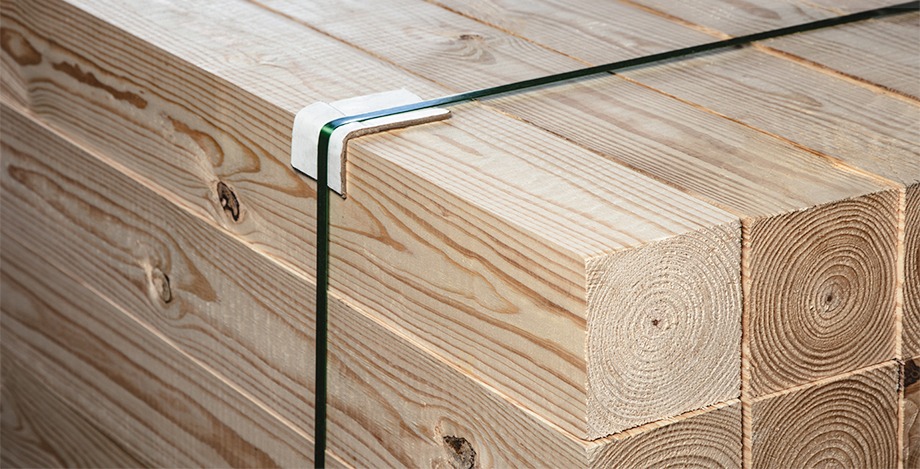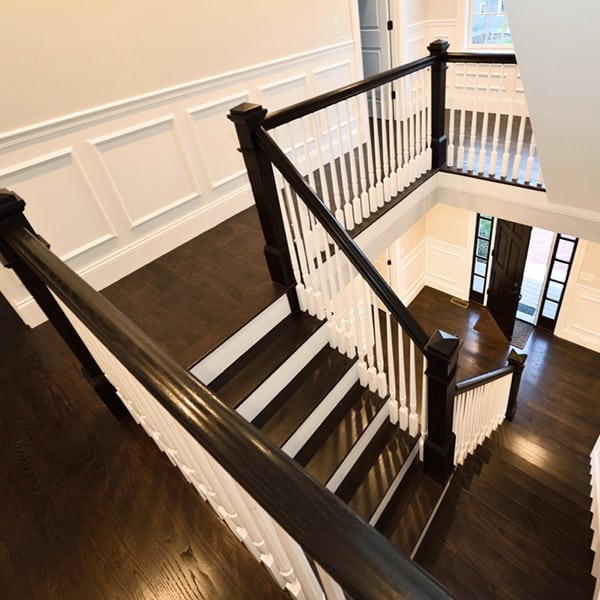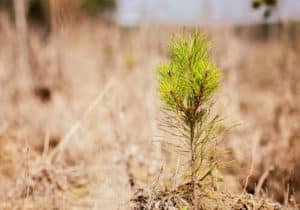[rs-image img_url=”/wp-content/uploads/2020/06/Logs-on-Yard.jpg” link=”” alt=”Forest Edge Rendering” width=”” height=”” class=”” type=”img-rectangle” border=”default” new_win=”no” margin=”” pos=”center” wrap=”no”/]
STUMPED BY SOFTWOODS AND HARDWOODS?
If you found yourself on a gameshow with the final-round question being, “What is the difference between hardwood and softwood?,” and you answered, “Hardwood is hard and strong, and softwood is soft and less strong,” you would lose. Cue buzzer. Game over. Your opponent is jumping up and down.
Commonly miscategorized by their names, softwoods are called “softwood” because they are conifer trees and have needle-shaped leaves – or, if you like science, gymnosperms. Most are evergreens. Contrarily, hardwoods are obtained from deciduous trees and are angiosperms.
Because of the misnomers associated with these two varieties of wood, it is essential to know from a building-products perspective which types of wood are best suited for various construction applications.
SOFTWOODS
Softwoods are ideal for structural panels and other building components for many reasons. Softwood, such as southern yellow pine, is lighter in weight (not strength) than hardwood, making roofing and sheathing work less of a pain. Softwood trees grow faster than hardwood trees, feeding timber mills and wood-products plants at a faster rate and thus keeping end-users’ costs down. Softwoods are notoriously less expensive than hardwoods.
Softwood is a versatile timber with high workability. They stem from gymnosperm trees, which do not have pores, but rather, rely on medullary rays and tracheids to transport water and produce sap, resulting in a stunning, seamless finish. Softwood is easier to work with than hardwoods and can be used for many varied applications. Softwood timber is mostly used for sheathing, roofing, framing, ceilings, furniture, molding, doors, and windows.
Because softwoods grow at a faster rate, sustainability is much more attainable. Softwood trees are a very renewable resource, and the replanting of them has grown the United States timber basket in softwood-friendly regions. Softwoods are also more readily available, making up 80% of all timber.
Examples of softwood trees:
- Pine
- Cedar
- Redwood
- Spruce
- Douglas fir

HARDWOODS
Hardwoods produce a stylish, high-performing grained wood that is generally used for flooring and furniture. It is very dense, making it difficult to carve and maneuver, but it offers good tensile and shear strength.
Because of its easy maintenance, hardwoods make beautiful flooring. Hardwoods are easy to clean; scratches and dents are easily fixed. They come in a wide variety of colors and finishes and have a high resistance to fire.
Hardwood forests take longer to replenish due to the trees’ slow growth rate. Imagine a Louisiana live oak. They are absolutely glorious but take a lifetime or more to get there. Such a slow growth rate does not make for an economical timber supply and drive end-users’ costs up.
While hardwoods’ most common use is flooring, it can also be used for cladding, paneling, cabinetry, fencing, boats, and outdoor decks. Hardwoods tend to be more difficult to work with and perform best in high-traffic usage, such as flooring and furniture.
Examples of hardwood trees:
- Oak
- Maple
- Hickory
- Walnut
- Cherry

SOFTWOOD VS. HARDWOOD: THE WINNING ANSWER
So, back to that winning game-show question. The winning answer is: “Softwood trees are conifer trees, whereas hardwoods are deciduous, flowering, fruit, or nut-producing trees. They have different application uses in construction, so don’t be fooled by their common names.” Cue the confetti.
RoyOMartin is the low-cost producer of southern yellow pine OSB and plywood products. View our full range of quality, made-in-the-USA wood products at RoyOMartin.com.
—Amanda M. Vincent, Sales Representative






